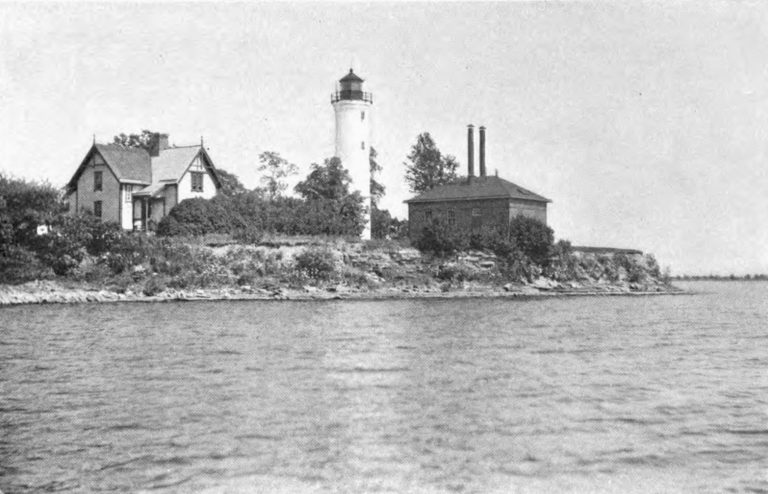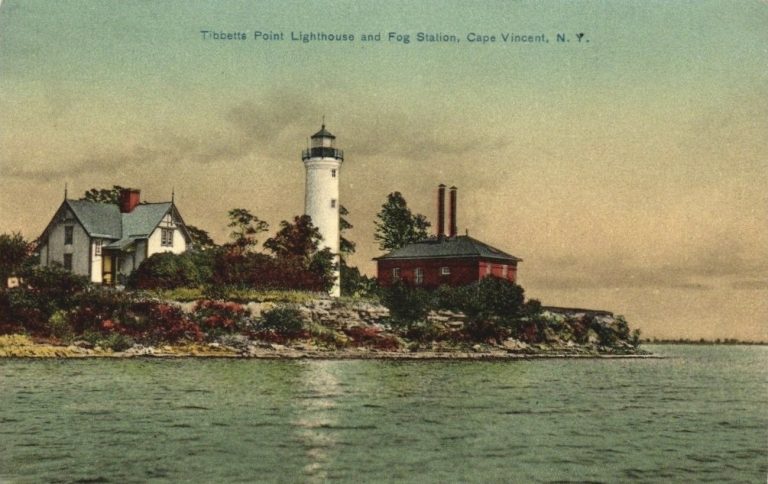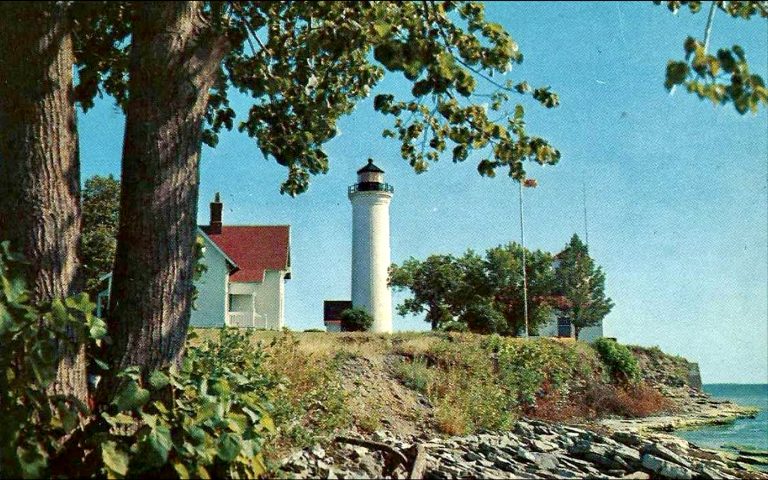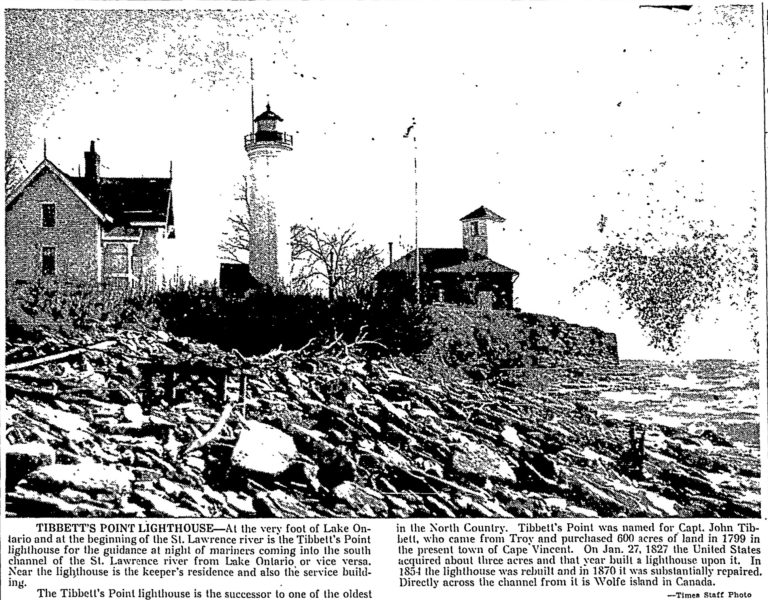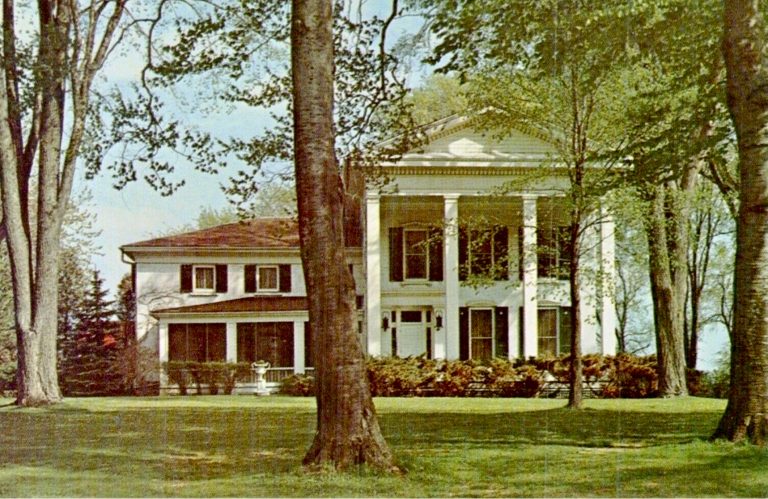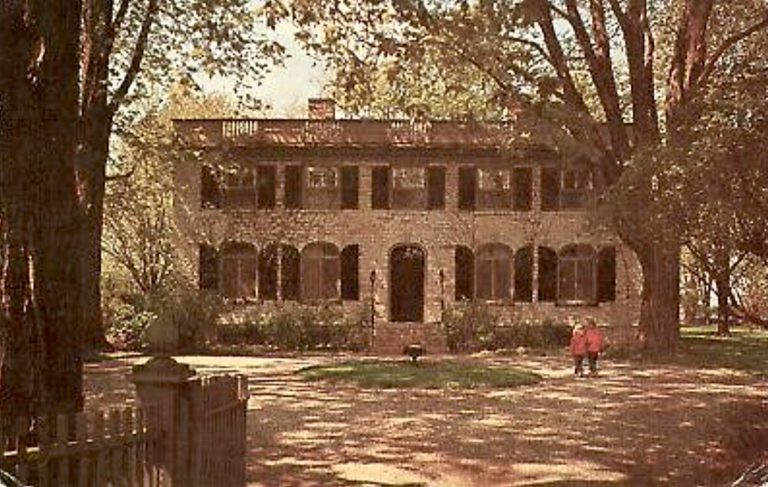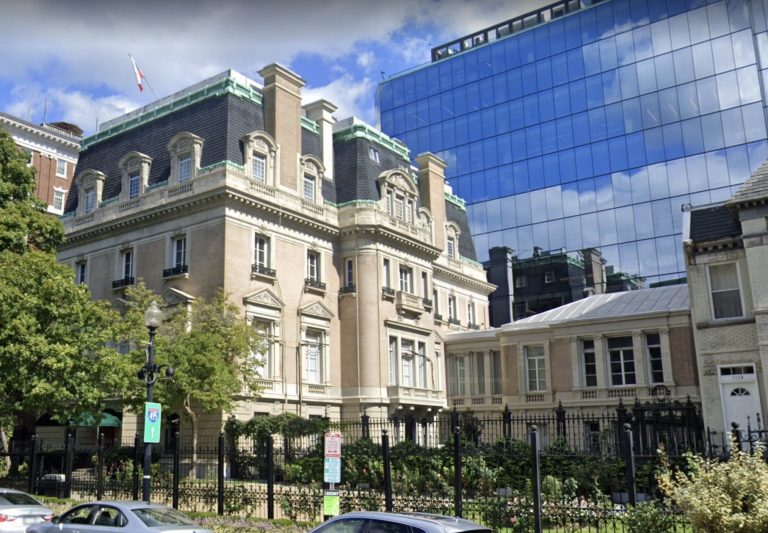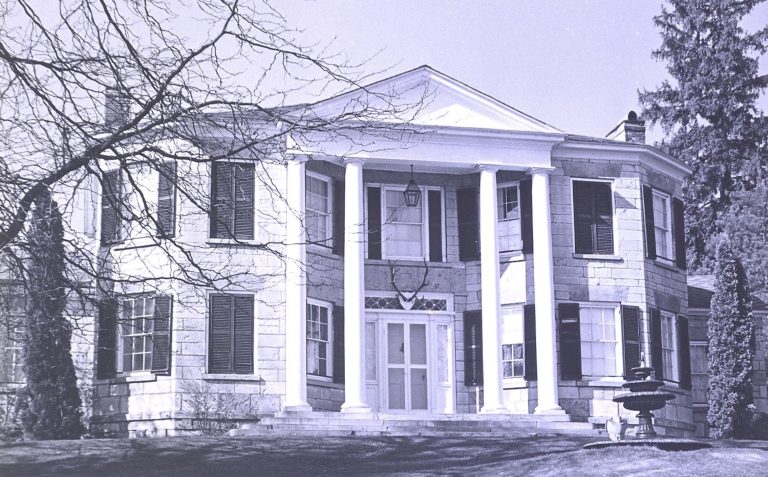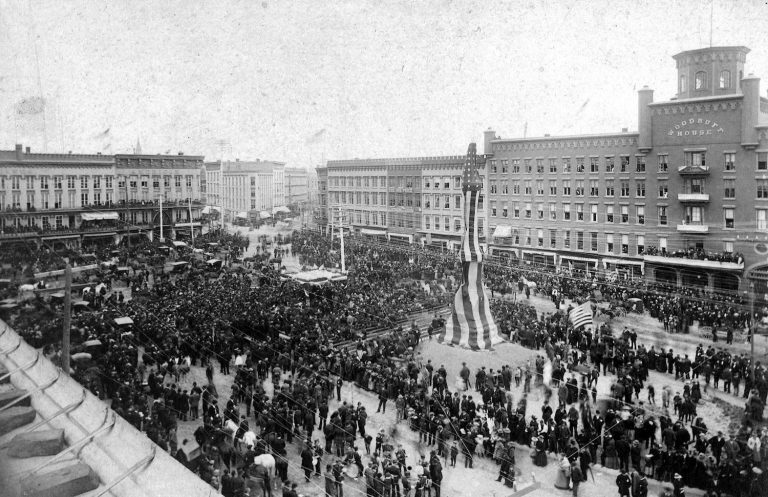Capt. John Tibbetts Deeds Land To U.S. Government To Build Tibbetts Point Lighthouse in 1827
Initially constructed in 1827, the Tibbetts Point Lighthouse has a long and storied history with beginnings going back to 1799 when Captain John Tibbetts of Troy, New York, received a land grant for 600 acres, which would include the point just outside Cape Vincent on the St. Lawrence River. In 1826, $3,000 was appropriated by the U.S. government to erect a lighthouse on approximately three acres of land deeded by Capt. Tibbetts for constructing a federal lighthouse “where lake and river meet.”
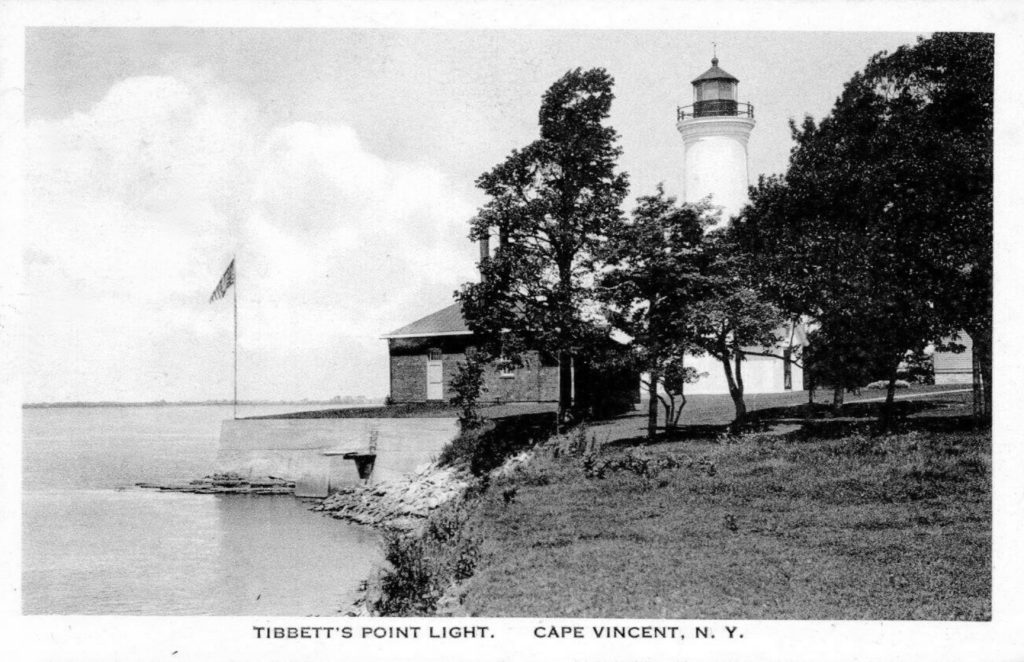
Upon its completion, the Tibbetts Point Lighthouse reportedly stood sixty-seven feet above the water, and its light was visible from fourteen nautical miles away. President John Quincy Adams appointed the lighthouse’s first keeper on November 2, 1827, Judah Williams, who was paid $350 years annually to maintain and operate the facility.
Tibbetts Point Lighthouse was rebuilt in 1854 and powered by lard oil with a beam of 50 candlepower. Over the years, it was eventually converted to electricity, and in 1960, it was upgraded to a 15,000 candlepower beam that could be seen for 16 miles. The light was later automated in 1981 when the property was occupied and maintained, and not without controversy, by the United States Coast Guard (more on that later.)
In 1897, a steam-operated fog whistle was installed, replaced thirty years later by a diesel-powered whistle. In that same year, the Watertown Daily Times reported on Tibbetts Point Lighthouse’s attraction as a destination for short getaways for locals–
This is a trip away from the usual haunts of automobiles and can be made any time in the summer season. Go to Cape Vincent and turn to the left, keeping along the shore to the end of the road at Tibbetts Point. The lighthouse was built in 1827 and rebuilt in 1854. It is a model of cleanliness and the keeper won the prize for several years for the best-kept lighthouse on the lake. While in Cape Vincent, visit the United States Bureau of fisheries and see some of the historical points around the village. A trip to the remains of old Fort Haldimand on Carleton Island would be well worth the time.
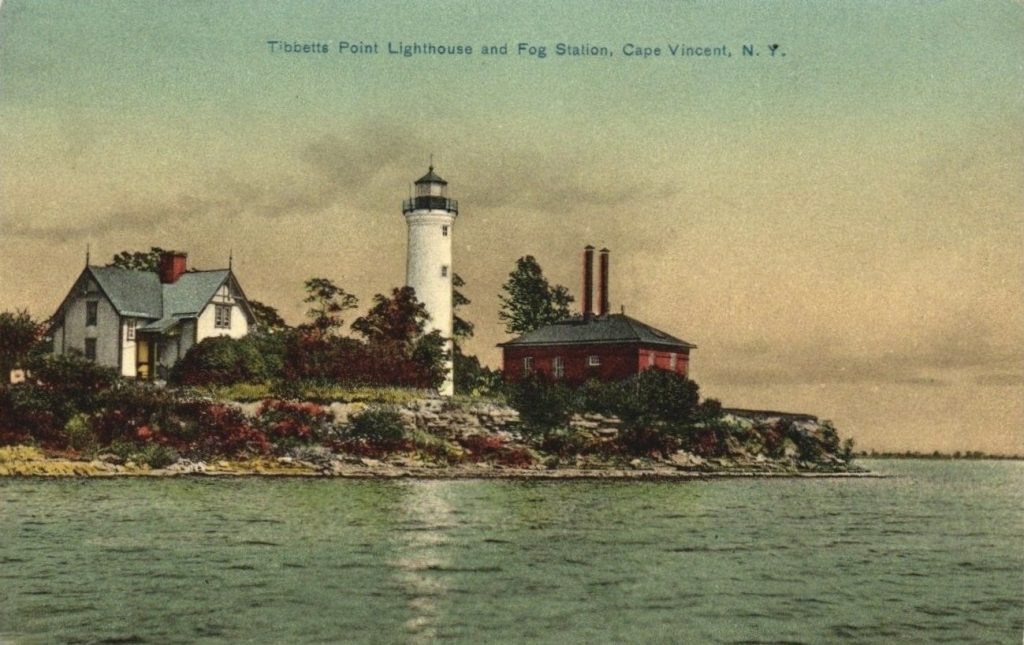
That keeper was William E. Montanna, who took charge of the Tibbett’s Point Lighthouse on April 1, 1896, and maintained it for over forty years, retiring in March of 1937 at the age of 68. During his long career, he received 17 letters of commendation from the heads of the lighthouse system in Washington, D. C., while holding the efficiency button for ten years and counting.
Mr. Montanna was quoted in the Watertown Daily Times as saying–
“I can safely say, he added, that there was never a wreck near my station and that I have always had the light in my station and the fog siren in operation when necessary.”
Mr. Montanna enjoyed nearly four years of retirement before passing away in February of 1941 at 72.
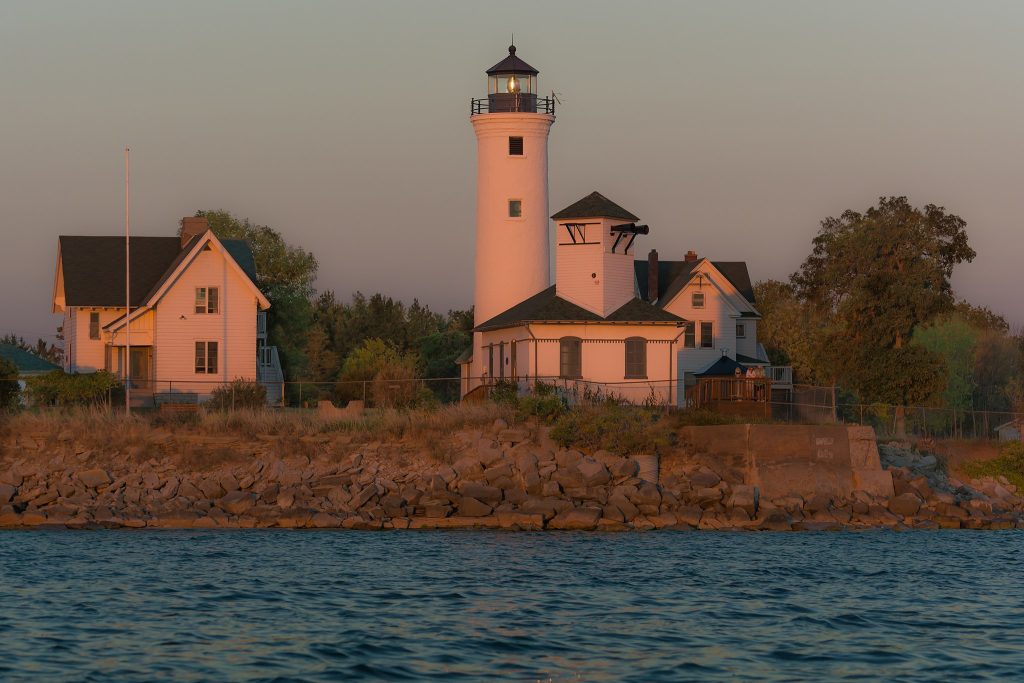
On December 6, 1951, Tibbetts Point Lighthouse’s foghorn joined the Dexter Sulphine, Pulp and Paper company’s whistle to indicate daily opening and closing hours for the second half of the Northern New York duck season. The horn and whistle aided hunters who complained they could not hear the alerts, an interesting predicament considering the residents of Cape Vincent had complained about the foghorn shaking their houses years earlier.
After having occupied and maintained Tibbetts Point Lighthouse since 1939, the United States Coast Guard was ready to abandon the historic lighthouse after controversy brewed between the local officials and the Coast Guard official stationed there when fences and a gate were erected, along with posters, to keep people of the lighthouse property that had long played an essential role to the area’s tourism and historical appeal.
The issue, as stated by the local Coast Guard official stationed there, was that tourists “milling about the property” had recently become a more substantial problem, with several people having walked through his house while vandals had broken windows in the one neighboring it. The private residences lacked any demarcation from the lighthouse and its associated facilities.
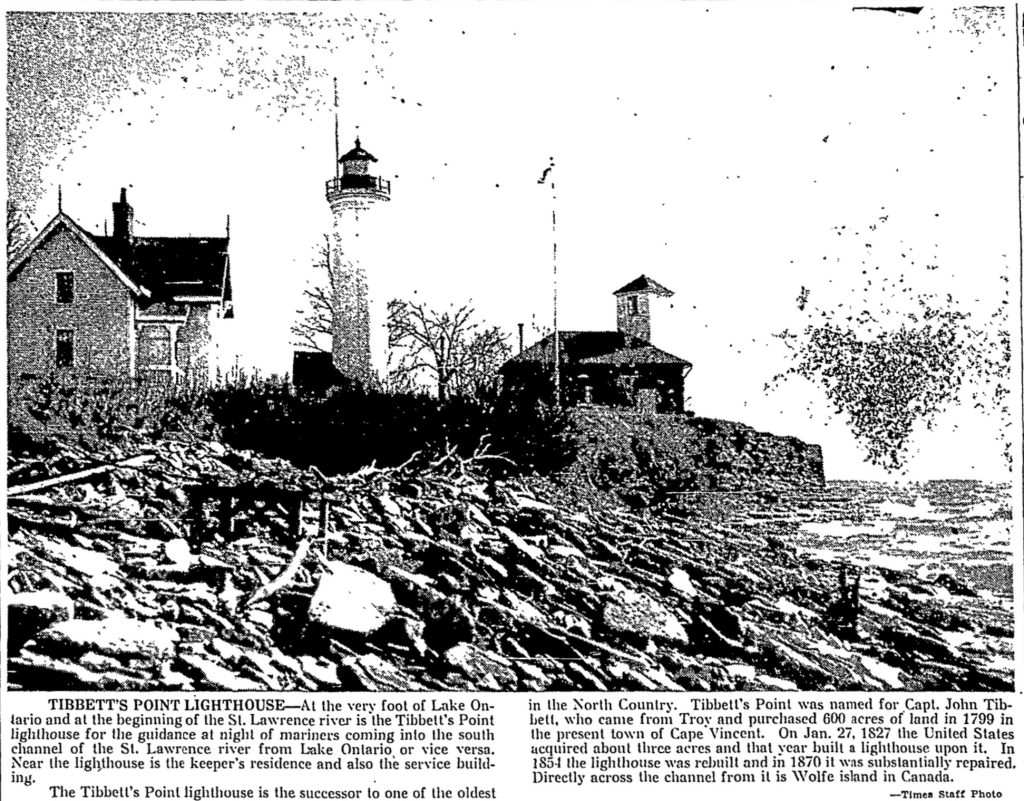
The Coast Guard Commander, Alan Rosebrook, from Buffalo, made a visit to Cape Vincent to discuss the issue. Noting its historical and economic importance to the community and empathizing with his officer, the commander proposed placing a fence to separate the two buildings from the lighthouse. He also acknowledged that the Coast Guard may still abandon the property depending on cost estimates to refurbish and repair the property.
While local officials met the proposal favorably, by February of the following year, 1982, the Tibbetts Point Lighthouse was declared “surplus,” with the Coast Guard expected to leave town shortly. By July, the Coast Guard negotiated with the Syracuse Council of American Youth Hostels for property turnover. The organization had the finances to perform the necessary maintenance and provide $1,000,000 worth of liability insurance.
After nearly a year of meetings and negotiations, the Coast Guard agreed to lease the property. The property became a youth hostel in 1984, the same time Tibbetts Point Lighthouse was added to the National Register of Historic Places.
Although the Youth Hostel organization had funds to cover operational and lease expenditures, it did not have the budget to perform necessary maintenance. This led to the formation of the Tibbetts Point Lighthouse Historical Society in 1988, created solely to preserve and restore the landmark. The Watertown Daily Times reported the group’s progress a year later on April 10, 1989—
In its first full year the organization formed to save the deteriorating lighthouse saw its membership grow from a handful of charter members to 414 dues-paying members, some from as far away as Tokyo, Japan.
The society planned numerous events to help pay for a full-scale revitalization costing from $75,000 – $150,000 over the next few years, but by 1991, they were sounding the alarm that the lighthouse’s days were numbered as it was feared it might not survive another notorious North Country winter and was in desperate need of repair. That year, the Town of Cape Vincent acquired Tibbetts Point Lighthouse grounds from the Department of the Interior, though a later article in 1999 stated the Coast Guard still owned and operated the lighthouse itself.
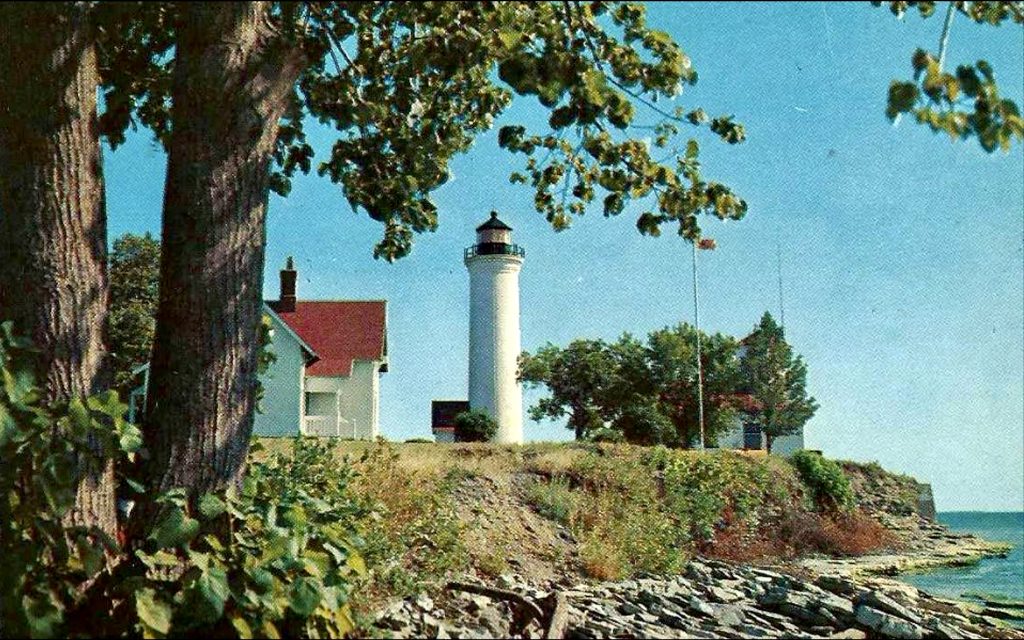
The following year, improvements such as a new visitor’s center were approved with a portion of the funding provided by the Historical Society. Several years later, the Fog Signal building was renovated and opened to the public.
In 1994, the town of Cape Vincent was finally forced to deal with the deteriorating condition of the lighthouse. On June 24th, The Times reported–
Cape Vincent – A harsh winter finally took its toll, leaving the town no choice but to begin fixing the large crack in the 140-year-old Tibbetts Point Lighthouse.
“It reached the point we felt it couldn’t wait,” said town Supervisor H. Otis Radley. “It was dangerous.”
Town employees Monday began pulling out two layers of brick from the 34-inch-thick walls, leaving exposed a section approximately 20 feet high and 8 feet across.
Workers said they will lay more than 3,000 bricks to fix the hole. It will take two to three weeks to lay all the bricks and replace the stucco exterior.
The Historical Society, once again, played a vital role in helping with the effort with their “buck a brick” drive, where people could help offset some of the costs by donating a dollar for each brick with hopes of reaching $4,000.
Below: A short, informative clip from WPBS Digital Studios YouTube channel.
In the years since, the Historical Society has been the driving force in the many renovations and restorations that have occurred at Tibbetts Point Lighthouse, from weather-beaten windows to entrance doors. The Tibbetts Point Youth Hostel also helped contribute to the maintenance of the buildings over the years in exchange for use of the buildings, though the Historical Society’s website states the hostel is no longer in operation, and rooming accommodations are no longer offered.
Despite the actual lighthouse tower’s inaccessibility due to its still being actively maintained and used as a navigation guide by the Coast Guard, the Tibbetts Point Lighthouse remains a popular tourist attraction and, fortunately, a landmark that either greets vessels either entering or leaving the St. Lawrence River.

